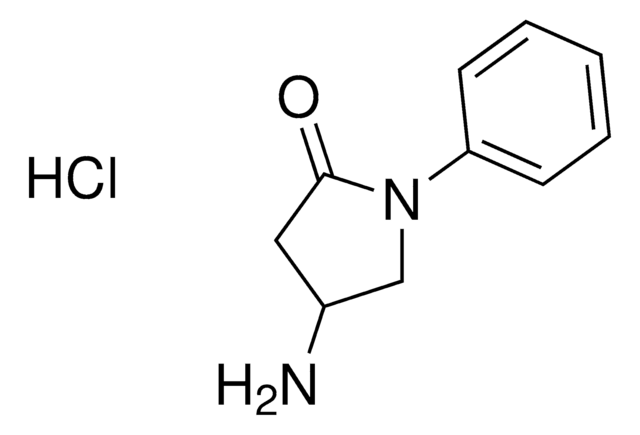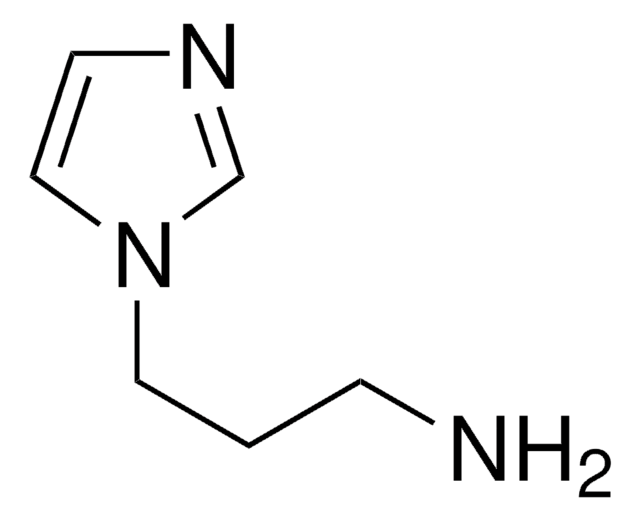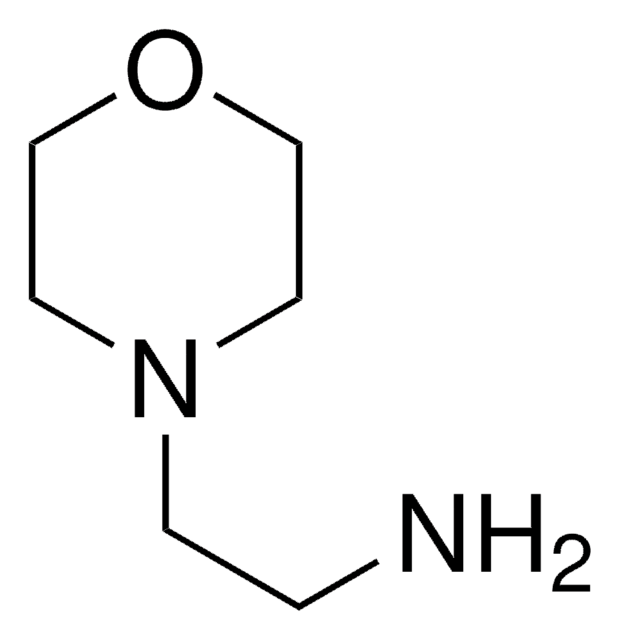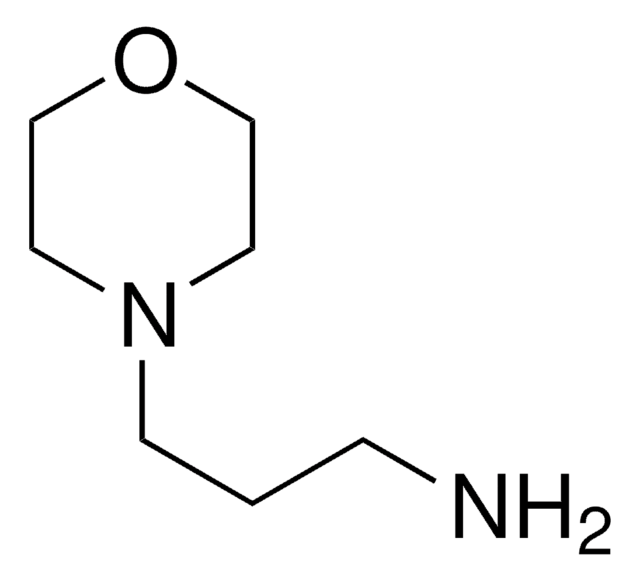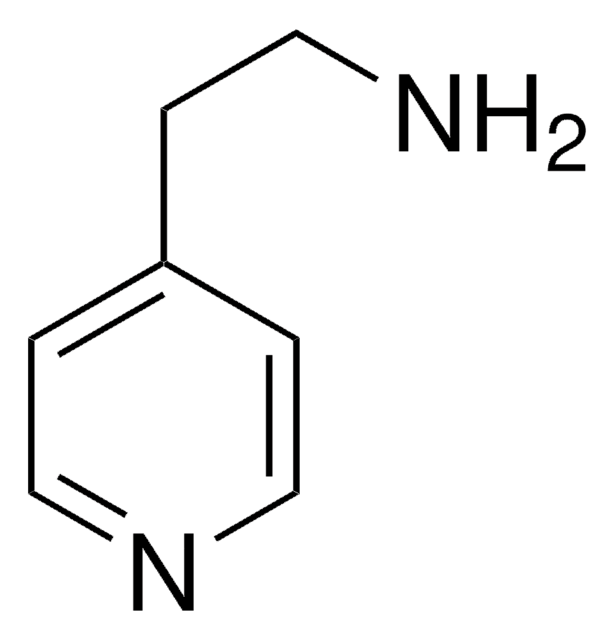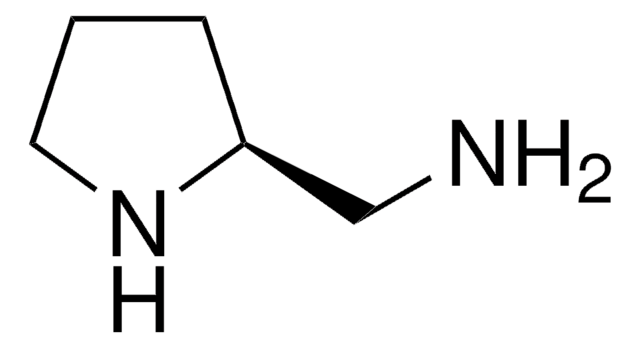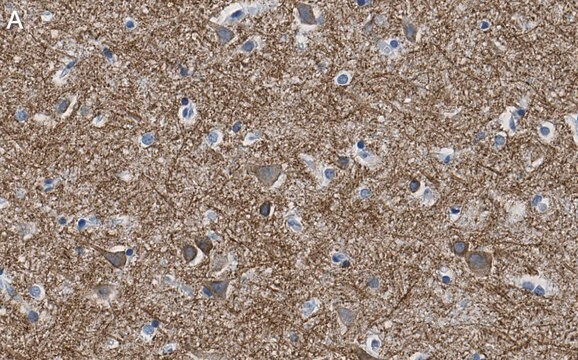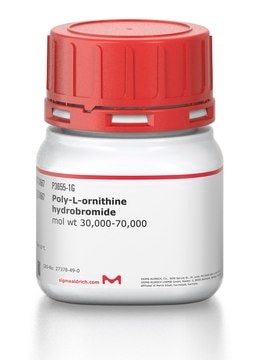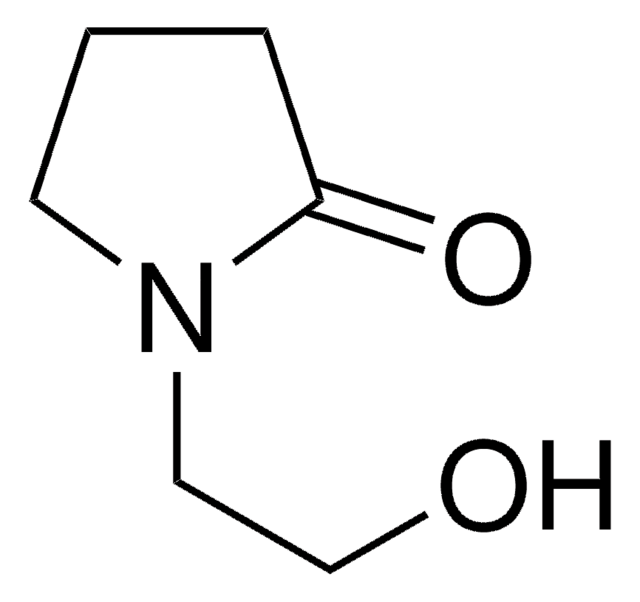136565
N-(3-Aminopropyl)-2-pyrrolidinone
technical grade
About This Item
Productos recomendados
grade
technical grade
Quality Level
form
liquid
impurities
2% 2-pyrrolidinone
refractive index
n20/D 1.5 (lit.)
bp
120-123 °C/1 mmHg (lit.)
density
1.014 g/mL at 25 °C (lit.)
functional group
amine
SMILES string
NCCCN1CCCC1=O
InChI
1S/C7H14N2O/c8-4-2-6-9-5-1-3-7(9)10/h1-6,8H2
InChI key
HJORCZCMNWLHMB-UHFFFAOYSA-N
¿Está buscando productos similares? Visita Guía de comparación de productos
General description
Application
Other Notes
signalword
Danger
hcodes
Hazard Classifications
Skin Corr. 1B
Storage Class
8A - Combustible corrosive hazardous materials
wgk_germany
WGK 3
flash_point_f
235.4 °F - closed cup
flash_point_c
113 °C - closed cup
ppe
Faceshields, Gloves, Goggles, type ABEK (EN14387) respirator filter
Elija entre una de las versiones más recientes:
¿Ya tiene este producto?
Encuentre la documentación para los productos que ha comprado recientemente en la Biblioteca de documentos.
Nuestro equipo de científicos tiene experiencia en todas las áreas de investigación: Ciencias de la vida, Ciencia de los materiales, Síntesis química, Cromatografía, Analítica y muchas otras.
Póngase en contacto con el Servicio técnico
